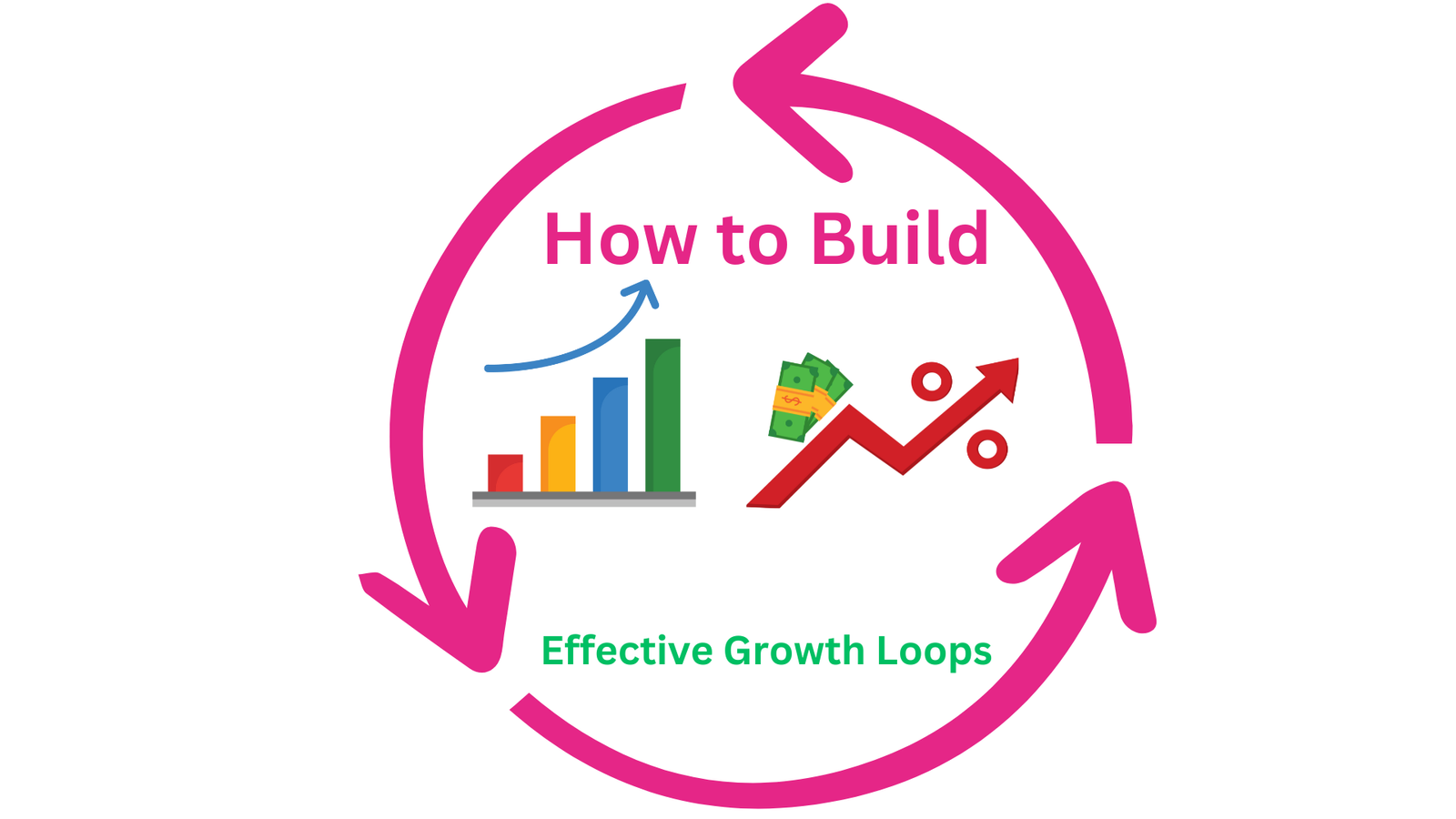To build effective growth loops for startups and online businesses, focus on creating a system where user actions naturally drive new user acquisitions, enhancing customer engagement and retention.
By leveraging continuous and compounding growth, growth loops are designed to create a self-sustaining cycle of value creation.
In this guide, we’ll explore the strategies, key components, and real-world examples of growth loops that work.
What Are Growth Loops and Why Are They Crucial?
Growth loops are self-reinforcing systems where the output of one cycle becomes the input for the next. Unlike traditional funnels that lose momentum after each stage, growth loops are circular and continuously generate new opportunities for user acquisition, engagement, and retention.
Key Components of a Growth Loop
1. Input: The user action or trigger that starts the cycle (e.g., signing up, creating content).
2. Action: A process or event that generates value (e.g., sharing content, inviting friends).
3. Output: The result that feeds back into the loop (e.g., new users, increased engagement).
Growth loops are especially important for startups and online businesses because they provide sustainable, scalable growth with minimal incremental costs.
How Are Growth Loops Different from Funnels?
While funnels are linear and focus on guiding users through a sequence, growth loops are cyclical and self-sustaining. Funnels often have a high drop-off rate, but growth loops build momentum over time, compounding results and creating exponential growth.
For instance:
A growth loop can encourage a customer to refer others, write reviews, and drive continuous purchases.
Uncommon Approaches to Building Growth Loops
A funnel might lead a customer to make one purchase.
1. Start with a High-Value Core Action
Identify the key action users take that delivers the most value to your business and other users.
Example: A social media platform’s core action could be content sharing.
Strategy: Focus your initial efforts on making this action seamless and rewarding.
Google NLP Keywords: core action, high-value action, user-generated content, seamless integration.
2. Optimize the Feedback Loop Timing
Ensure that the time between input, action, and output is as short as possible.
Fast feedback loops create momentum and keep users engaged.
Example: Gaming apps often reward users immediately to drive continuous engagement.
Google NLP Keywords: feedback loop, momentum, immediate rewards, engagement strategies.
3. Leverage Network Effects
The more users your platform attracts, the more valuable it becomes for others.
Encourage users to invite their peers (e.g., referral programs with incentives).
Example: PayPal’s referral program offered monetary rewards for both parties.
Google NLP Keywords: network effects, referral incentives, viral growth, platform scalability.
4. Use AI-Driven Personalization
Tailor the growth loop experience for individual users.
Example: Netflix’s recommendation system keeps users engaged and increases content consumption.
Strategy: Invest in data analytics to understand user preferences.
Google NLP Keywords: AI personalization, user preferences, recommendation systems, engagement optimization.
5. Gamify the Experience
Gamification encourages users to take actions that drive the loop forward.
Example: Duolingo uses streaks and badges to keep learners motivated.
Strategy: Incorporate leaderboards, progress tracking, or rewards.
Google NLP Keywords: gamification, user motivation, rewards systems, engagement metrics.
Step-by-Step Guide to Building Growth Loops
Step 1: Map Your User Journey
Understand your users’ pain points and motivations at every touchpoint.
Use surveys, analytics, and interviews to identify friction points.
Example: An e-commerce startup might focus on making the checkout process easier.
Google NLP Keywords: user journey, pain points, customer insights, user touchpoints.
Step 2: Define Your Loop’s Core Metric
Choose a measurable outcome that defines success.
Examples: Number of referrals, daily active users, or content shared.
Strategy: Align your growth loop’s input and output to this metric.
Google NLP Keywords: core metrics, measurable outcomes, user referrals, engagement tracking.
Step 3: Build and Test Hypotheses
Experiment with different loop structures to find the most effective system.
A/B testing can reveal which elements drive higher user engagement.
Example: Test different referral incentives to find the most compelling.
Google NLP Keywords: A/B testing, experimentation, user engagement, loop optimization.
Step 4: Automate the Loop Processes
Use automation tools to scale your growth loop effortlessly.
Example: Automate follow-up emails for user referrals.
Tools: Zapier, HubSpot, or custom APIs.
Google NLP Keywords: automation tools, scalability, follow-up emails, process optimization.
Step 5: Monitor, Analyze, and Iterate
Regularly review your growth loop’s performance and make necessary adjustments.
- Use analytics tools like Google Analytics or Mixpanel.
- Metrics: Monitor retention rates, engagement levels, and user acquisition costs.
- Google NLP Keywords: performance analysis, retention rates, user acquisition, analytics tools.
Real-World Examples of Successful Growth Loops
1. Dropbox’s Referral Program
- Input: Users invite friends to Dropbox.
- Action: Friends sign up and receive bonus storage.
- Output: New users join, repeat the cycle.
2. Airbnb’s User-Generated Content
- Input: Hosts create listings.
- Action: Guests book stays and leave reviews.
- Output: Reviews attract more bookings and new hosts.
3. LinkedIn’s Professional Networks
- Input: Users connect with others.
- Action: Connections share content and invite new users.
- Output: Increased platform engagement and user base.
Common Pitfalls and How to Avoid Them
1. Lack of User Incentives
Ensure users see immediate value in participating.
Solution: Offer tangible benefits like discounts, rewards, or recognition.
2. Overcomplicated Loops
Keep your loop simple and easy to understand.
Solution: Focus on one key action and refine it before adding complexity.
3. Ignoring Feedback
Regularly gather user feedback to identify areas for improvement.
Solution: Use surveys, reviews, and social listening tools.
Conclusion: Why Growth Loops Are the Future of Marketing
Growth loops are the ultimate strategy for startups and online businesses seeking sustainable and scalable growth. By creating systems that continuously feed back into themselves, you can achieve exponential results with minimal effort. Start small, measure success, and iterate to build the perfect growth loop for your business.
To leverage growth loops effectively, consider working with Marketing Trends Pro . Our services are designed to help startups and online businesses create impactful, sustainable growth strategies.

